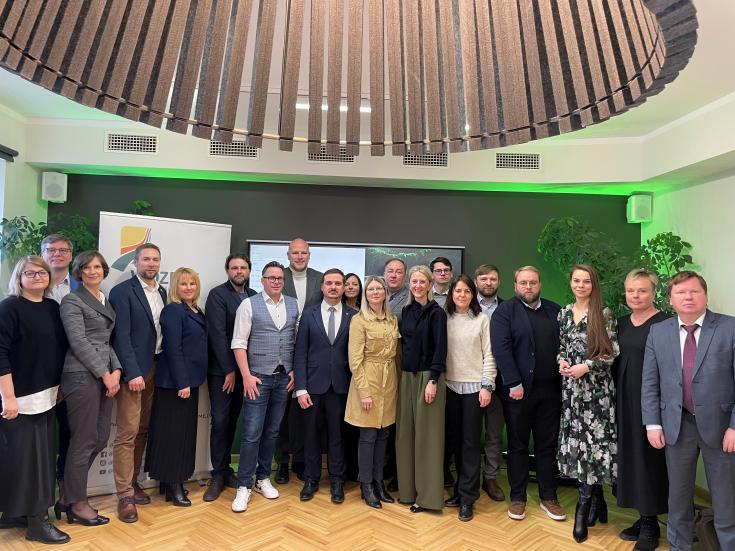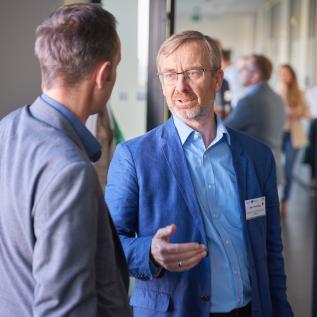Setting-up a regional Open Innovation Hub in Vidzeme Region

On 23-24 January 2025, the Policy Learning Platform hosted a peer review on behalf of the Vidzeme Planning Region (VPR) in Latvia on the topic of setting-up a regional Open Innovation Hub.
Current state of affairs
Vidzeme Planning Region (VPR) is a public regional development and coordination institution of 11 municipalities which operates under the supervision of the Ministry of Smart Administration and Regional Development of the Republic of Latvia. VPR's work is based on the Development programme for 2022-2027. This regional-level medium-term spatial development planning document highlights that the development of an innovation ecosystem is necessary for the region.
To take the first steps in this regard, in April 2024 the VPR, alongside the Vidzeme University of Applied Sciences (ViA) established the Vidzeme Open Innovation Hub (VAIC) with the aim to develop the knowledge and innovation ecosystem of Vidzeme region.
The main tasks of this Hub are related to creating a culture of collaboration among various stakeholders, increasing their competencies and positioning Vidzeme's innovativeness internationally. However, currently, VAIC is integrated into the university as a department and operates with shared resources from Vizdeme Planning Region and the University without any direct budget and the various innovation initiatives in the region are still scattered and project-based.
Therefore, the VPR is in the process of establishing a more durable collaboration and funding framework for the Innovation Hub and wanted to learn from the experience of other European regions on how to operate such a hub in rural areas.
Peers from across Europe
Alongside Rene Tõnnisson and Mart Veliste, from the Policy Learning Platform, excellent peers participated in the peer review:
-
Kieran Comerford, Head of Economic Development & Enterprise, Carlow County Council, Ireland
-
Petar Mišura, Head of Office, City of Šibenik, Sibenik-Knin County, Croatia
-
Brian Ogilvie, Head of Research & Commercialisation Support, South East Technology University, South East, Ireland
-
Simon Maas, International collaboration & projects lead, AgriFood Capital, North Brabant, Netherlands
-
Pirko Konsa, Member of the Board at Tartu Science Park, Estonia
The peers shared their experiences and provided tailored policy recommendations for ways of tackling our beneficiary’s policy challenges.
Key recommendations
To formulate a shared vision and an actionable plan completed in the next 6 months for the next 3-4 years of the Open Innovation Hub. This also requires the VAIC to identify which KPIs from the VPR or municipality level the hub will be supporting, thus providing a clearer communication of the role of VAIC in the region as well as keeping a clear focus when selecting future projects. Equally important is the establishment of a triple-helix strategic management structure with the involvement of key stakeholders.
The new hub could have several locations across the region but should be coordinated from the regional perspective. Local municipalities can benefit if they start thinking over administrative borders and agree on expert/focus areas among themselves. Instead of internal competition, the municipalities can reap greater benefits by being a bigger and stronger region together.
To set up talent programmes that benefit all stakeholders: industry, academia and the public sector. Collaboration with the universities and the local industry, including new industrial parks, was seen as a key element by the peers.
To ensure basic funding (long-term, indefinite) from local municipalities to support the activities of VAIC. The first committed Euro needs to come from the local government level to make use of other (EU) grant schemes and private investments to thus multiply the funding in the region. At the same time, some co-funding from local companies should also be used as an alternative revenue stream and a guarantee of the beneficiaries’ commitment.
Regarding support to SMEs it was advised to go through a three-step process:
- Map regional businesses by type across the municipalities.
- Conduct a gap analysis on which services are not there for these businesses.
- Examine the most appropriate method to deliver on those gaps, including which services should be delivered by the new Open Innovation Hub.
The host’s policy challenges, and all the peer suggestions will be available shortly in the follow-up report.

I wanted to extend my gratitude for the warm hosting and the insightful Peer Review process. As someone new to this type of process, I wasn’t sure what to expect, but I found the entire experience both highly informative and inspiring. It’s truly encouraging to see such a dedicated group discussing actions that drive progress in the enterprise sector.

Peer review publication
Find more information on the methodology and experiences of previous beneficiaries in our publication.

Apply for a peer review
Start your peer review application process today and find solutions to your policy challenge with our expert and peers!

